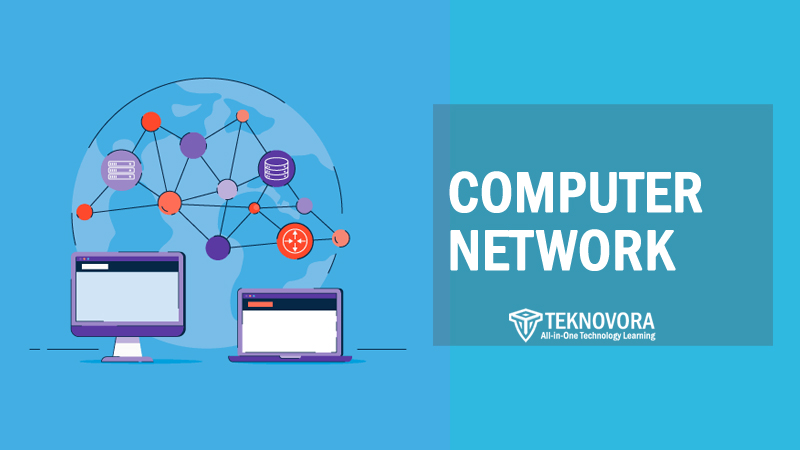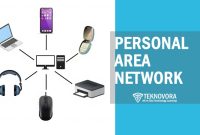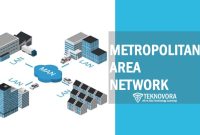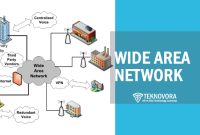Every time you send an email, stream a video, or access files from a shared drive, ywaou’re relying on something most people rarely think about: a computer network. From small office systems to the vast infrastructure of the internet, networks quietly handle the exchange of data that powers modern life.
A computer network isn’t just a collection of cables and routers—it’s the invisible framework that enables communication between devices, applications, and even entire organizations. Whether you’re working remotely, playing online games, or using a cloud-based app, computer networks are working behind the scenes to make it all seamless.
But how exactly do these systems work? What makes one network different from another? And why are certain types better suited for specific tasks? Understanding the types, components, and mechanics of computer networks is key to grasping how our digital world stays connected—and why it matters.
Definition of Computer Network
A computer network is a system of interconnected devices that communicate with each other to share resources, exchange data, and enable coordinated operations. These devices—often called nodes—can include computers, servers, printers, smartphones, routers, and other networked hardware.
The core function of a computer network is to allow data to move from one point to another efficiently. This is achieved through a combination of hardware components (like cables, switches, and access points) and software protocols that manage how data is packaged, transmitted, routed, and received.
In its simplest form, a network could be two computers connected to share a file. At its most complex, it could be a global infrastructure linking billions of devices through the internet. Regardless of size or scale, all computer networks operate on the same principle: enabling communication between digital systems.
Core Components of a Computer Network
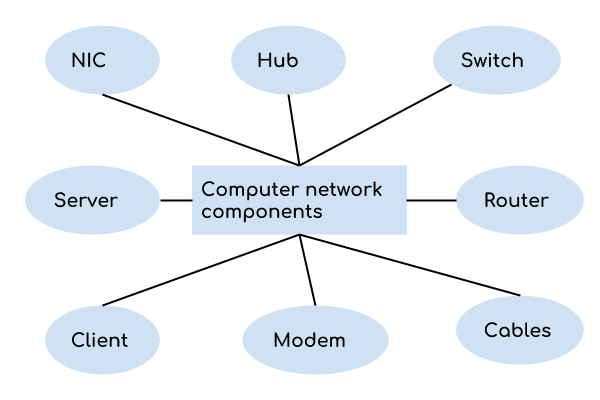
Behind every functioning computer network is a set of essential components that make communication possible. These components work together to move data between devices, manage traffic, ensure security, and maintain connectivity. Understanding these building blocks is key to grasping how networks operate on both a physical and logical level.
Nodes (Devices)
Nodes are the endpoints or redistribution points within a network. They include computers, servers, printers, smartphones, and other digital devices. Each node is assigned a unique address (such as an IP address) that allows it to send and receive data across the network.
Transmission Media
Transmission media refers to the physical or wireless pathways that carry signals between devices.
- Wired media: Includes Ethernet cables, coaxial cables, and fiber-optic cables. These are typically used for stable, high-speed connections with low interference.
- Wireless media: Includes Wi-Fi, infrared, Bluetooth, and satellite signals. Wireless options are ideal for mobility but can be more susceptible to signal loss or security risks.
Network Interface Cards (NICs)
Each device in a network requires a NIC—a hardware component that allows it to connect to the network. NICs can be built into a device or installed separately, and they handle the sending and receiving of data based on network protocols.
Switches and Routers
- Switches operate within local networks (like in a home or office) and are responsible for directing data to the correct device based on MAC addresses.
- Routers connect different networks together—such as a local network to the internet—by forwarding data based on IP addresses. They also manage traffic between devices and often include built-in security features like firewalls.
Modems
A modem (modulator-demodulator) translates digital data from a computer into analog signals that can be transmitted over telephone lines or other external media. It’s often used to connect a home network to an internet service provider (ISP).
Networking Software
Software plays a crucial role in network management. This includes:
- Operating systems with networking capabilities (like Windows Server or Linux)
- Network monitoring tools
- Firewall and antivirus software
- Protocol stacks (e.g., TCP/IP suite)
Overview of Essential Network Components and Their Functions
| Component | Description | Examples / Functions |
|---|---|---|
| Nodes (Devices) | Endpoints or redistribution points in a network | Computers, servers, printers, smartphones |
| Transmission Media | The physical or wireless paths for data transmission | Ethernet cables, fiber optics, Wi-Fi, Bluetooth |
| Network Interface Cards (NICs) | Hardware that connects devices to the network | Built-in or external NICs; handles sending/receiving data |
| Switches | Direct data within a LAN based on MAC addresses | Connects devices on the same network segment |
| Routers | Connects different networks and directs data based on IP addresses | Home router, enterprise router |
| Modems | Converts digital data to analog signals and vice versa | Cable modem, DSL modem |
| Networking Software | Programs that manage network functions and protocols | OS-level tools, firewalls, antivirus, TCP/IP stack |
Together, these components form the physical and logical foundation of any computer network, enabling data to flow securely, accurately, and efficiently.
Types of Computer Networks
Not all networks are created equal. Depending on the size, purpose, and geographic scope, computer networks can be classified into several distinct types. Each type serves different needs—from connecting devices in a single room to linking systems across continents. Understanding these categories helps clarify how data is structured, routed, and secured across various environments.
Local Area Network (LAN)
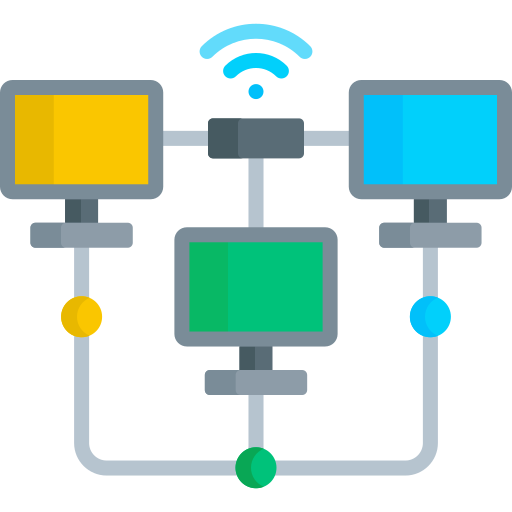
A Local Area Network (LAN) connects computers and devices within a limited physical area—such as a home, office, or school. It is typically managed by a single organization and offers high-speed connections.
- Use cases: Sharing files, printers, or applications within a building.
- Features: Low latency, high data transfer rates, private IP addressing.
- Examples: Office network, home Wi-Fi network.
Wide Area Network (WAN)
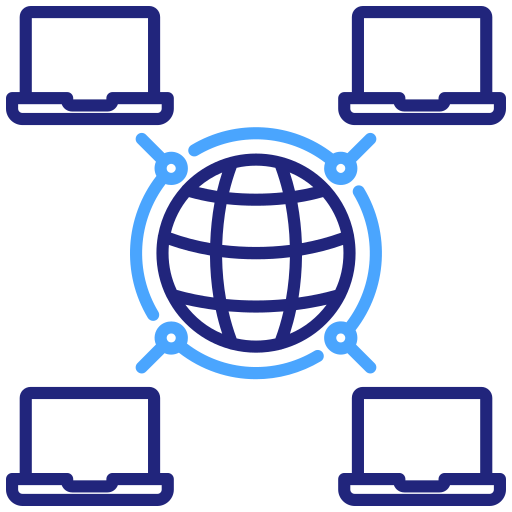
A Wide Area Network (WAN) covers a large geographical area and connects multiple LANs through routers and public communication links, such as the internet.
- Use cases: Interconnecting branch offices, accessing cloud services, remote collaboration.
- Features: Slower than LAN, often relies on leased telecommunication lines.
- Examples: The internet, corporate networks across cities or countries.
Metropolitan Area Network (MAN)

A Metropolitan Area Network (MAN) spans a city or campus and is larger than a LAN but smaller than a WAN. It often uses fiber-optic infrastructure to connect various buildings.
- Use cases: Linking universities, public transport systems, or government facilities within a metropolitan area.
- Features: Moderate speed, higher range than LAN, may be managed by a service provider.
Personal Area Network (PAN)

A Personal Area Network (PAN) is a small network designed for a single person, typically within a range of a few meters.
- Use cases: Connecting a smartphone to a laptop or a smartwatch.
- Features: Bluetooth or USB-based connections, very limited range.
- Examples: Bluetooth earphones, tethering devices, smartwatch syncing.
Wireless Networks (WLAN, WWAN)
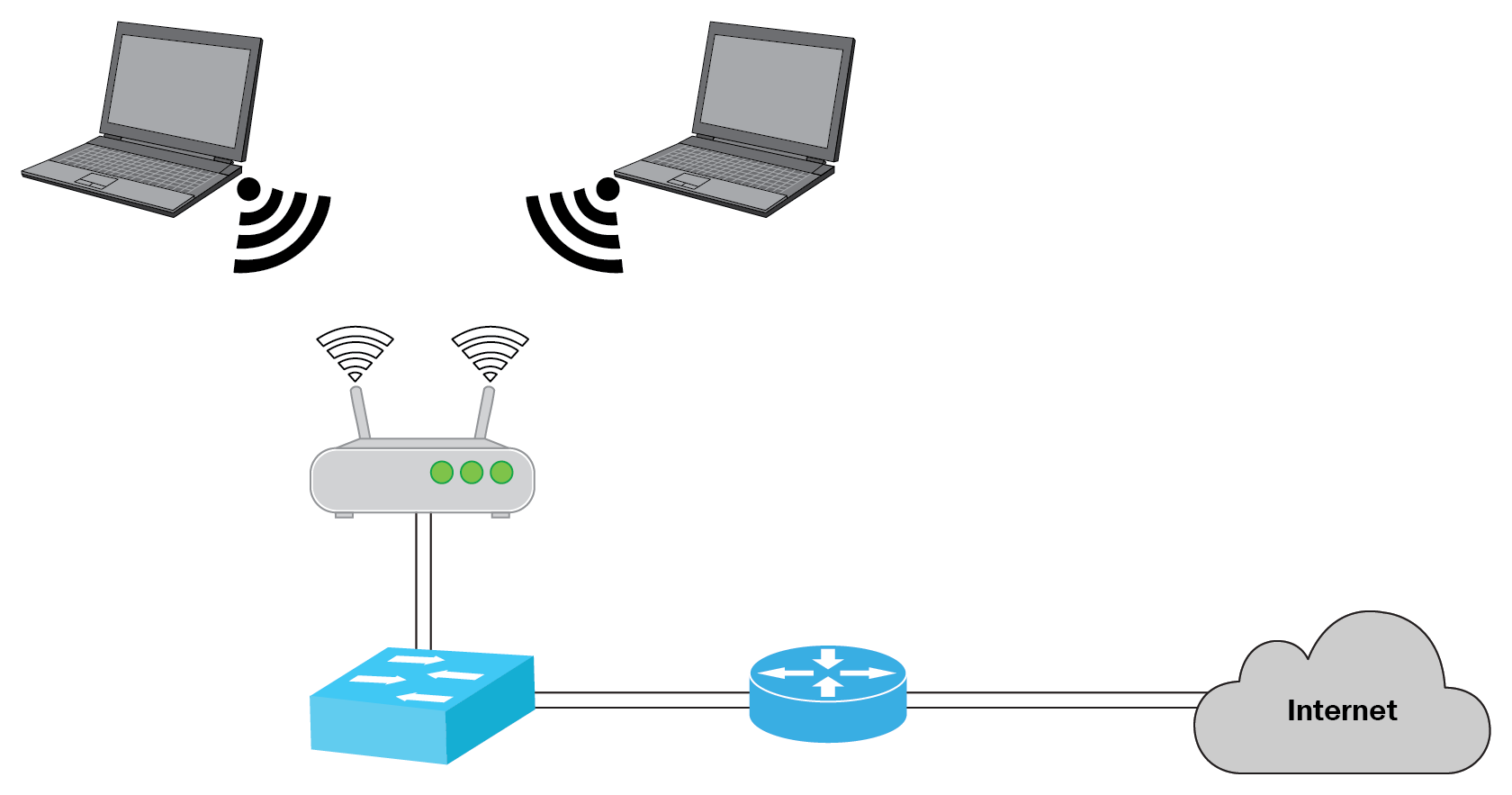
Wireless networks use radio signals instead of physical cables to transmit data.
- WLAN (Wireless LAN): Covers a small area like a home or café using Wi-Fi.
- WWAN (Wireless WAN): Uses cellular networks (4G/5G) to connect across wide areas.
- Benefits: Mobility, ease of installation.
- Challenges: Security risks, potential for signal interference.
Each of these network types serves a distinct role in our increasingly connected world. In many cases, multiple types are combined within an organization to meet diverse operational needs.
Comparison of Common Computer Network Types
| Network Type | Coverage Area | Typical Use Cases | Key Characteristics |
|---|---|---|---|
| LAN | Small (office, home, school) | File sharing, printer access, internal apps | High speed, low cost, limited to a single location |
| WAN | Large (cities, countries, global) | Internet, corporate branches, cloud access | Slower than LAN, connects multiple LANs over long distances |
| MAN | City or campus-wide | University networks, municipal services | Moderate speed and size, often public or semi-public ownership |
| PAN | Very small (a few meters) | Personal device syncing (Bluetooth, USB) | Low power, limited range, individual use |
| WLAN | Small to medium (wireless LAN) | Wireless internet in homes, cafes, offices | Uses Wi-Fi, flexible installation, can connect to a LAN backbone |
| WWAN | Large (wireless WAN over cell towers) | Mobile internet, IoT connectivity on the move | Uses cellular networks (4G/5G), wide area, dependent on provider |
How a Computer Network Works

At its core, a computer network functions by allowing devices to exchange data using a set of rules and technologies that ensure the information is transmitted accurately, securely, and efficiently. This process involves addressing, data packaging, routing, and protocol management—all coordinated across both hardware and software.
Data Transmission Basics
When one device wants to send data to another, it first breaks the data into small packets. Each packet contains information such as:
- Source and destination addresses
- Packet order (so they can be reassembled)
- Error-checking codes
These packets are transmitted across the network and reassembled by the receiving device into the original file or message.
IP Addressing and Routing
Every device in a network is assigned a unique IP address, which functions like a digital home address. IP addressing ensures that data is delivered to the correct destination, whether the device is across the room or across the world.
Routers play a key role in directing data packets through the most efficient path using routing tables and algorithms. If a device is on the same network, data may go directly; otherwise, it’s routed through multiple points to reach its target.
Network Protocols
Protocols define how devices communicate and interpret data. The most common include:
- TCP/IP (Transmission Control Protocol/Internet Protocol): The foundation of most modern networking. TCP ensures data integrity and proper reassembly, while IP handles addressing and routing.
- UDP (User Datagram Protocol): Faster but less reliable than TCP. Often used for streaming or gaming where speed matters more than packet perfection.
- HTTP/HTTPS: Protocols for web communication—HTTPS adds encryption for security.
- FTP (File Transfer Protocol): Used for transferring files between systems.
Protocols work together in layers—this is known as the OSI model or the TCP/IP stack—each layer handling specific tasks like addressing, encryption, session management, and application handling.
Switching and Network Traffic Management
Within a network, switches direct traffic based on MAC addresses, which are unique to each device’s network interface. They ensure that data goes only to the intended device rather than being broadcast to every device on the network.
On larger networks, load balancers, traffic shapers, and firewalls are used to optimize speed, ensure security, and prevent congestion or attacks.
Benefits of Computer Networking
Computer networks are foundational to nearly every aspect of modern life—from personal communications to global business operations. Their benefits are vast, enabling more efficient collaboration, centralized management, and faster access to information.
1. Resource Sharing
Networks allow multiple devices to access shared resources such as printers, storage drives, internet connections, and software applications. This reduces redundancy and lowers hardware costs by eliminating the need for duplicate equipment.
2. Centralized Data Management
In a networked environment, data can be stored, managed, and backed up from a central server. This simplifies maintenance, ensures consistency across users, and makes data recovery more efficient in the event of hardware failure.
3. Faster and Easier Communication
Email, instant messaging, video conferencing, and VoIP services all rely on computer networks. They make communication more immediate and accessible, even across great distances.
4. Enhanced Collaboration and Productivity
By enabling multiple users to work on the same files, access the same databases, or use cloud-based applications, networks support real-time collaboration. This is especially valuable in remote and hybrid work environments.
5. Scalability and Flexibility
Networks can be scaled to support additional users, devices, or locations without requiring complete reconfiguration. Wireless networking, virtual private networks (VPNs), and cloud integration allow for rapid growth and remote access.
6. Improved Data Security (When Properly Configured)
With the right network security protocols—such as firewalls, access controls, and encryption—organizations can safeguard sensitive information and monitor traffic to detect potential threats.
7. Cost Efficiency
By centralizing resources and automating processes, networks can reduce operational costs. Cloud-based solutions, in particular, allow organizations to pay only for what they use and eliminate the need for expensive on-premises infrastructure.
8. Access to Cloud Services and the Internet
Computer networks act as the gateway to the internet and cloud platforms, enabling everything from online banking and remote learning to e-commerce and global research collaboration.
Challenges in Computer Networking
While computer networks bring numerous advantages, they also present a set of technical and operational challenges. These issues can impact performance, security, and scalability—especially as networks grow in complexity and size.
1. Security Risks
Networks are frequent targets for cyberattacks such as malware, phishing, man-in-the-middle attacks, and DDoS (Distributed Denial of Service). Without proper safeguards, sensitive data can be intercepted, altered, or stolen.
- Solution: Implement strong encryption, firewalls, intrusion detection systems (IDS), and user authentication protocols.
2. Network Downtime
Hardware failure, software bugs, or misconfigurations can cause network outages, leading to service disruptions and productivity loss.
- Solution: Use redundant systems, regular maintenance, and failover mechanisms to ensure high availability.
3. Scalability Issues
As more devices and users are added to a network, performance can degrade if the infrastructure isn’t designed for growth. Bottlenecks may occur in bandwidth, processing power, or routing efficiency.
- Solution: Plan with scalable architectures, such as modular networking equipment and cloud-based services.
4. Performance Bottlenecks
High traffic, outdated hardware, or poor network design can lead to latency, packet loss, or slow speeds—especially in environments that rely on real-time data transmission.
- Solution: Optimize traffic routing, upgrade hardware, and monitor usage to detect and resolve performance issues.
5. Management Complexity
Larger networks require constant monitoring, configuration, and troubleshooting. Managing access control, device settings, firmware updates, and traffic routing can become overwhelming.
- Solution: Deploy centralized network management tools and automation systems to simplify administrative tasks.
6. Compatibility and Integration
Networks often need to support a mix of hardware and software from different vendors. Compatibility issues can arise, especially during upgrades or when integrating new technologies.
- Solution: Use standardized protocols and thoroughly test new components before full deployment.
Real-World Examples of Computer Networks

Computer networks are not just theoretical systems—they’re the backbone of countless real-world applications. From homes to multinational corporations, nearly every modern setting depends on some form of networking infrastructure. Here are several examples that show how computer networks are implemented in different environments.
1. Home Networks
A typical home network connects personal devices—like smartphones, laptops, smart TVs, and printers—through a wireless router. It allows users to share an internet connection, stream content, sync data between devices, and manage smart home systems.
- Network type: WLAN (Wireless Local Area Network)
- Devices involved: Router, modem, wireless access point, connected devices
2. Office and Enterprise Networks
Businesses of all sizes rely on computer networks for internal communication, file sharing, centralized printing, data storage, and secure access to internet resources. Enterprise networks often include firewalls, servers, domain controllers, and virtual private networks (VPNs).
- Network type: LAN (internally), WAN (for branch offices)
- Use cases: Collaboration tools, CRM systems, VoIP, cloud computing
3. Campus and Educational Networks
Universities and schools deploy wide-ranging networks that connect faculty, students, and researchers across multiple buildings or campuses. These networks support virtual learning platforms, online libraries, secure testing environments, and academic databases.
- Network type: MAN (Metropolitan Area Network)
- Features: High-speed fiber-optic backbone, secure access control, public Wi-Fi zones
4. Cloud-Based and Data Center Networks
Modern applications often rely on cloud networks, where computing resources are hosted in off-site data centers. Services like Google Cloud, AWS, and Microsoft Azure provide on-demand scalability and global access.
- Network type: WAN and SDN (Software-Defined Networking)
- Benefits: Elastic resource allocation, remote access, reduced hardware dependence
5. Industrial and IoT Networks
Manufacturing facilities, utility companies, and smart cities use networks to connect sensors, machines, and monitoring systems. These systems enable automation, predictive maintenance, and real-time data analysis.
- Network type: PAN, LAN, and mesh networks
- Applications: Smart grid management, traffic monitoring, factory automation, home Internet of Things (IoT)
These examples illustrate the adaptability of computer networks across different industries and environments. From simple personal setups to complex global systems, networks are the hidden engines behind our digital interactions.
Summary Table: Real-World Examples of Computer Networks
| Environment | Network Type(s) | Key Features | Common Applications |
|---|---|---|---|
| Home Network | WLAN, PAN | Wireless access, device syncing, internet sharing | Streaming, online gaming, smart home automation |
| Office/Enterprise | LAN, WAN, VPN | Secure communication, centralized resources, firewall controls | File sharing, VoIP, cloud-based tools, internal databases |
| Campus/Education | MAN, LAN | High-speed backbone, role-based access, public Wi-Fi zones | eLearning platforms, digital libraries, virtual classrooms |
| Cloud/Data Center | WAN, SDN, Hybrid Cloud | Elastic resources, virtualization, software-defined management | SaaS, cloud storage, global app hosting |
| Industrial/IoT Systems | PAN, Mesh, LAN | Sensor connectivity, automation, real-time data processing | Smart manufacturing, energy monitoring, IoT-based alerts |
| Mobile Networking | WWAN, 4G/5G | Cellular-based internet, wide-area coverage, mobile access | Remote work, field devices, connected vehicles |
Conclusion
Computer networks are the foundation of our digital world. They enable everything from sending a quick message to managing large-scale cloud infrastructures. By connecting devices, sharing resources, and enabling real-time communication, networks make modern life possible—at home, at work, and across the globe.
Understanding what a computer network is, how it works, and the different types that exist provides valuable insight into the systems we rely on every day. Whether you’re a student exploring the basics, an IT professional expanding your expertise, or a business decision-maker evaluating infrastructure needs, a solid grasp of networking concepts is essential.
As technology continues to evolve—through faster wireless standards, growing cloud adoption, and expanding IoT devices ecosystems—the importance of reliable, secure, and scalable computer networks will only grow.
FAQ About Computer Network
What is the main purpose of a computer network?
The primary purpose of a computer network is to enable devices to communicate and share resources such as files, printers, and internet access.
What are the four main types of computer networks?
The four main types are:
LAN (Local Area Network)
WAN (Wide Area Network)
MAN (Metropolitan Area Network)
PAN (Personal Area Network)
How do computer networks communicate?
Devices in a network communicate by exchanging data packets through transmission media, guided by network protocols like TCP/IP and managed by routers and switches.
What is the difference between LAN and WAN?
LAN connects devices within a small area (like an office or home), while WAN spans a larger geographic region, connecting multiple LANs—often over the internet.
What are common devices used in a computer network?
Key devices include routers, switches, modems, servers, computers, and wireless access points. Each plays a specific role in enabling and managing connectivity.

